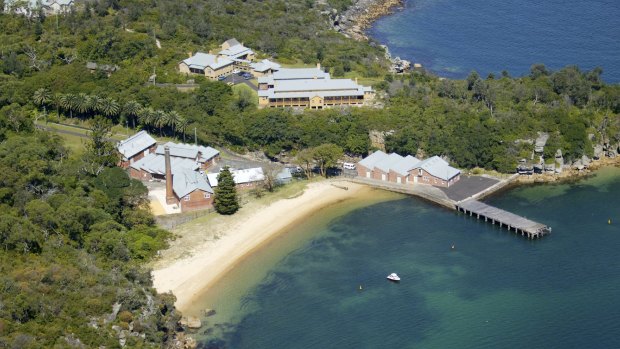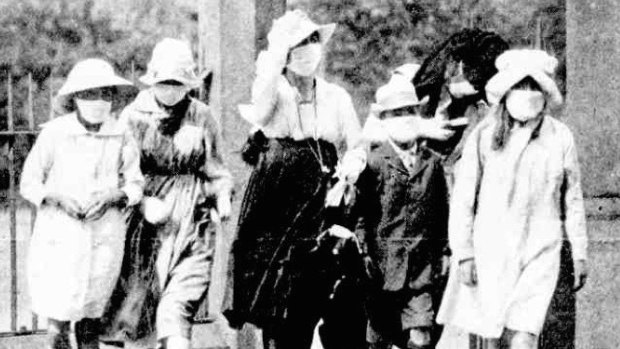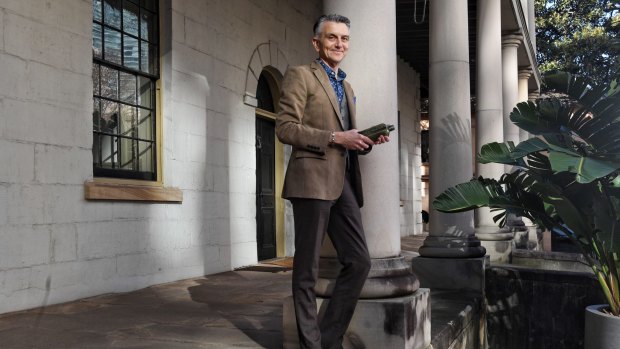This was published 3 years ago
Sydney during the Spanish flu: Tour goes inside the city's disease-ridden past
By Anthony Dennis

The Quarantine Station at North Head, Manly.Credit: FairfaxMedia
For a man who devotes much of his academic life to our pandemic past, Dr Peter Hobbins is concerned about how our pandemic present will be viewed and interpreted in a century from now by other medical historians.
Masses of lived experiences are being generated on social media but who is capturing that information and digitally archiving it to ensure it can still be read in 100 years, he asks?
What about our choice to work from home? Who is preserving our food delivery apps, let alone information about precisely which pizzas we ordered? Historians of the future, he believes, will face an enormous challenge in interpreting the world of today.

A family heads to church during the Spanish Flu outbreak in 1919.
"For a historian a century hence, it seems unlikely that any of today's hospital buildings will still be standing," says Dr Hobbins, an academic at the Department of History at the University of Sydney.
"It won't be impossible, but from our built heritage to our smartphone photos, what we choose to keep now will shape the information available to create a tour and the stories that can be told."
But first things first. Dr Hobbins is preparing to lead a special day-long tour, aptly entitled "In sickness and in health" to rediscover Sydney's disease-ridden and epidemic past. The tour, to run on September 19, will piece together what remains of our murky and at times macabre colonial contagion heritage.

Dr Peter Hobbins, from the Department of History at the University of Sydney, wonders how historians will look back at the COVID-19 outbreak in 100 years' time.Credit: Nick Moir
Fortunately, at least one hospital from that era remains standing - the General Rum Hospital, now the Mint Museum in Macquarie Street, is one of the earliest hospitals built in Australia. "A major part of it still forms the NSW Parliament building," Dr Hobbins said. "We will also visit the burial location of an Aboriginal person who probably died from an imported disease in 1789, as well as a staircase that was broken in 1900 by citizens desperately clamouring for a plague vaccine."
As well as the visit to the General Rum Hospital, the tour, which is being organised and promoted by Renaissance Tours, includes other highlights such as a visit to an abandoned morgue to discover the value of vaccines and advances in medical care, and a water taxi ride across the harbour to the Quarantine Station at North Head, Manly, with its buildings dating to the 1850s.
In a neat parallel with the theme, the tour will be conducted strictly to COVID-19 safe guidelines, including the wearing of masks, says Evan Petrelis, managing director of Renaissance Tours.
"There has been a lot of interest in this tour, I suspect because people are interested to know how our current experience of living in a pandemic compares with how previous generations of Australians dealt with similar circumstances," he said.
"There is much for us to learn about our present from hearing about experiences from the past. If anything, we may find that what past generations went through was not too dissimilar to what we are going through and helps us to better understand and make sense of today's situation."
And while many believe we have it bad enough in 2020 thanks to COVID-19, Dr Hobbins invites prospective tour participants to reflect on how unpleasant life could be for our forebears.
Until the end of the 19th century parts of Sydney were among the least healthy places in Australia and it was rare for parents who had children before 1900 to see them all survive into adulthood.
"While our current thoughts are on respiratory diseases that spread largely through close contact, Sydneysiders of the past had to deal with illnesses that were transmitted through their water supplies, milk deliveries, tainted foods and flea-bitten rats," says Dr Hobbins.
"Thankfully, we don't think much about typhoid fever now, except in the context of overseas travel. But even after World War I, typhoid regularly appeared in local communities, causing a prolonged fever, headaches, diarrhoea or constipation, and occasionally leading to deaths."
The disease was spread through backyard wells tainted by sewage, or through contact with dairy staff from suburbs like Leichhardt, now the city's salubrious restaurant and cafe-lined "Little Italy".
"Even into the 1940s, schoolchildren were regularly exposed to potentially fatal infections, including scarlet fever, diphtheria, measles, whooping cough and poliomyelitis," he said.
"Well before the 'Spanish' flu or pneumonic influenza of 1918–19, the outbreak of smallpox in the 1870s and 1880s, and bubonic plague in the 1900s created enormous social turmoil and physically changed the city by justifying the destruction of areas regarded as slums."
Believe it or not, there is a positive side to our medical heritage. Dr Hobbins' studies of the pneumonic influenza pandemic indicates that in 1918 the city's maritime quarantine measures managed to shut out the disease for several critical months.
Dr Hobbins says that this meant that when the flu did come ashore in January 1919, it was a milder version and there was also a greater degree of community preparedness to deal with the crisis.
"It didn't quite 'flatten the curve' to the level we have achieved today, but Australia's death rate was markedly lower than most other Western countries, including New Zealand," he says. "By the end of that year, it was estimated that up to one-third of the NSW population had been infected with 'Spanish' flu, especially in Sydney."
Similarly to today's pandemic, the flu caused a massive dislocation of daily life, due both to sickness across the community and the huge burden of restrictions imposed in an effort to limit its spread.
Then, as now, there was no effective vaccine and no targeted medical treatment beyond supportive care. Despite these challenges, combined with real fear of the grim reaper, many Sydneysiders put themselves at risk to care for each other.
"They struggled against economic hardship, limited resources and their own concerns to care for one another, trying to do what they had been told was the 'right thing'. As we are seeing today, confusion and frustration sometimes leads to regulations being ignored or misunderstood – but most people's intentions were good."
See also: The 10 terms travellers need to know in the COVID-19 era
See also: Eight epic travel disasters to take the edge off your wanderlust
Sign up for the Traveller Deals newsletter
Get exclusive travel deals delivered straight to your inbox. Sign up now.